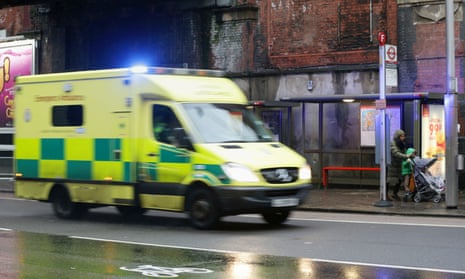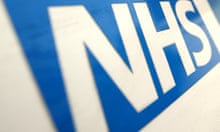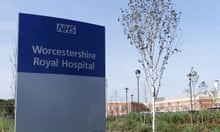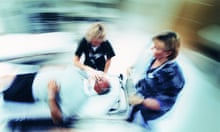The London ambulance service is the first 999 trust in England to be put in special measures after the health inspectorate expressed “serious concerns” about the way it might respond to terrorism and other mass-casualty emergencies. A team of 54 inspectors and specialists, including paramedics, call handlers, urgent care practitioners and operations managers, also uncovered shortages of frontline staff, poor response times to the most urgent calls, a culture of bullying, and lack of leadership.
The concerns of the Care Quality Commission (CQC) inspectors, who spent three weeks looking at the service in June, centred on the provision of Hazardous Area Response Teams (Harts), which are called out in the wake of terror attacks, explosions, firearms incidents, building collapses, train crashes and other major incidents.
Checks on staffing at the capital’s two Hart centres over six weeks revealed that instead of the minimum required six paramedics on duty at all times, four or fewer staff were available at each site on a number of occasions – and sometimes only one. “This was not a safe system of working where an effective Hart response could be utilised,” the inspectors noted.
They also said that major incident protocols, which were meant to be reviewed annually, had not been amended since July 2012, the month the London Olympics started. Some staff also said they were unaware of major incident procedures and most ambulance crews had not been trained in these since the pre-Olympic rehearsals.
The trust, serving an area with 8.6 million people, had however provided “appropriate resources” to ensure that the objectives of a terror-related exercise in Croydon, south London, in February were met, the inspectors said.
Inspectors also noted that the trust had “a major incident plan to ensure that the trust was capable of responding to major incidents on any scale on a way that delivered optimum care and assistance to the victims”. They pointed to “appropriate special contingencies for dealing with acts of aggression such as improvised explosive devices, aircraft incidents and public disorder”.
As to other shortcomings, staff were demoralised, with ambulance crews telling inspectors there were not enough appropriately trained staff to ensure that patients were consistently safe and had the right level of care.
However, the arrival of a new chief executive, Dr Fionna Moore, had helped improve performance and boost staff morale. Moore said Hart teams, with 82 specialist staff trained to give medical care in hazardous areas such as at height, in water, in confined spaces or where there may be hazardous materials, were just part of major emergency responses.
The service had over 3,000 clinical staff and had also reviewed its major incident plans since the inspection. “We regularly test our major incident response with London’s emergency services and NHS partners, and recently took part in Operation Strong Tower involving 120 of our staff over two days,” said Moore.
“In the event of a Paris-style incident in the UK, there would be a national response coordinated centrally. Should this happen in London, we would be supported by other ambulance trusts, who would be on hand to provide additional staff to assist in responding to this incident. In the event of a major incident, our experience shows that, time after time, our staff want to come in, even when off duty, to care for those affected,” said Moore.
The service has had an extra 167 frontline staff since the inspection and there had been improvements in reaching the most critically ill and injured patients within 10 minutes. Moore said: “While we haven’t always got it right for our staff or responded quickly enough to the challenges we faced, we are beginning to see the benefits of many of the changes we have introduced.”
Mike Richards, the chief inspector of hospitals, said he had asked the NHS Trust Development Authority to put the trust in special measures “because I believe this is the step necessary to ensure this vital service … gets the support it needs to improve”. He said however that frontline staff talked to by inspectors were “overwhelmingly dedicated, hardworking and compassionate”.
Richards said he wanted to provide Londoners with some reassurance. He said: “Firstly, that once care arrives, it is of a good standard – and dedicated and caring call handlers, drivers, paramedics and other frontline staff are working hard to ensure this. Secondly, that urgent steps are being taken – and improvements have already been made – to ensure that everyone who relies on this service receives excellent, timely care, and that London has the ambulance service it deserves.”
The overall rating given by CQC was “inadequate”, a rating also given to the trust’s resilience planning and emergency and urgent care services. A number of other areas required improvement.




